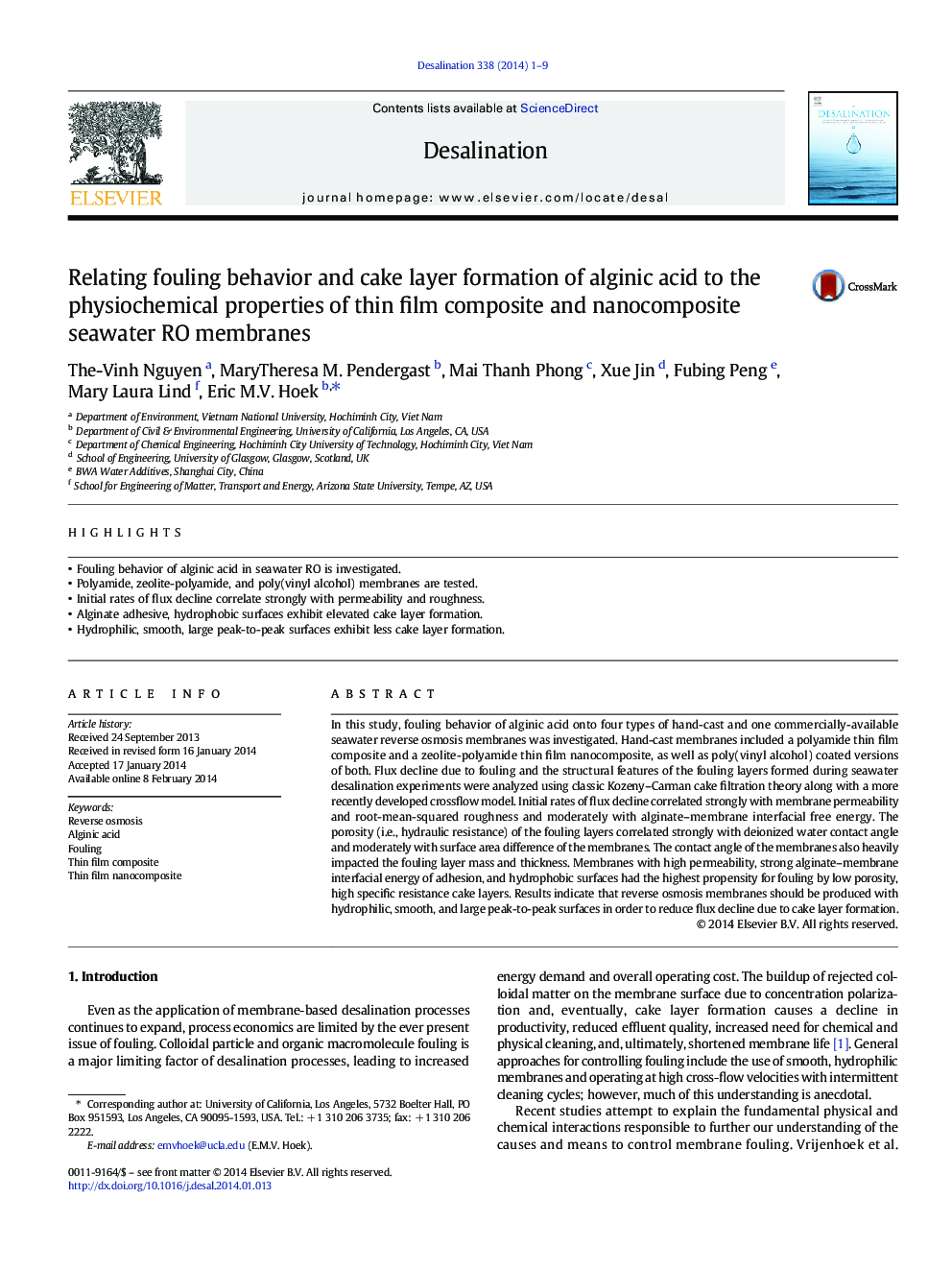| Article ID | Journal | Published Year | Pages | File Type |
|---|---|---|---|---|
| 623586 | Desalination | 2014 | 9 Pages |
•Fouling behavior of alginic acid in seawater RO is investigated.•Polyamide, zeolite-polyamide, and poly(vinyl alcohol) membranes are tested.•Initial rates of flux decline correlate strongly with permeability and roughness.•Alginate adhesive, hydrophobic surfaces exhibit elevated cake layer formation.•Hydrophilic, smooth, large peak-to-peak surfaces exhibit less cake layer formation.
In this study, fouling behavior of alginic acid onto four types of hand-cast and one commercially-available seawater reverse osmosis membranes was investigated. Hand-cast membranes included a polyamide thin film composite and a zeolite-polyamide thin film nanocomposite, as well as poly(vinyl alcohol) coated versions of both. Flux decline due to fouling and the structural features of the fouling layers formed during seawater desalination experiments were analyzed using classic Kozeny–Carman cake filtration theory along with a more recently developed crossflow model. Initial rates of flux decline correlated strongly with membrane permeability and root-mean-squared roughness and moderately with alginate–membrane interfacial free energy. The porosity (i.e., hydraulic resistance) of the fouling layers correlated strongly with deionized water contact angle and moderately with surface area difference of the membranes. The contact angle of the membranes also heavily impacted the fouling layer mass and thickness. Membranes with high permeability, strong alginate–membrane interfacial energy of adhesion, and hydrophobic surfaces had the highest propensity for fouling by low porosity, high specific resistance cake layers. Results indicate that reverse osmosis membranes should be produced with hydrophilic, smooth, and large peak-to-peak surfaces in order to reduce flux decline due to cake layer formation.
